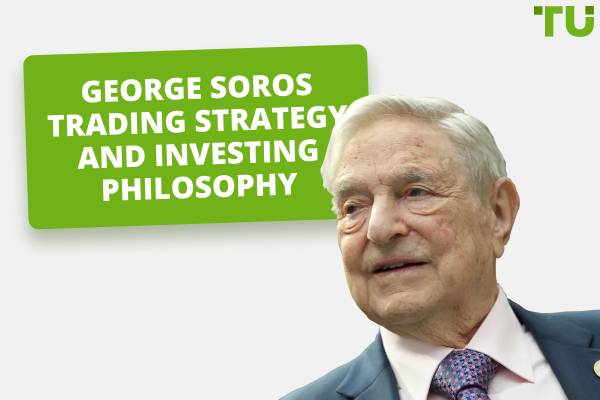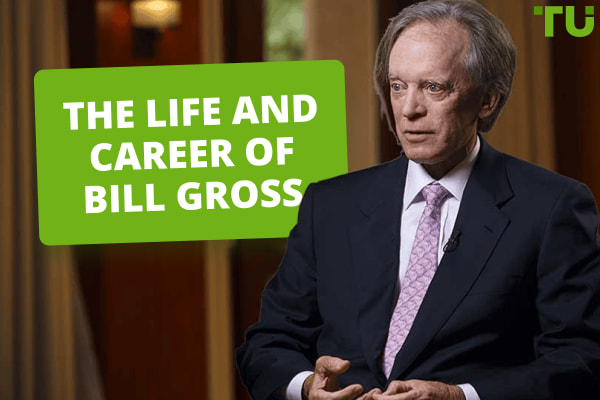How Many Stock Splits Has Tesla Had?
Tesla's shares (TSLA) have undergone two stock splits since their listing on the Nasdaq stock exchange in 2010. The first split, a 5 for 1 division, took place on 31st August, 2020 while the latest split, a 3 for 1 division, occurred on August 25, 2022.
Tesla, Inc. (TSLA) is a well-known electric vehicle and clean energy company founded by Elon Musk. Over the years, Tesla's stock has garnered significant attention from investors and the public. Specifically, the history of Tesla's stock split and the results following the same have intrigued the investor class. To shed some more light on this, the experts of TU will in this article delve into the history of Tesla's stock splits, how they work, provide an example, and discuss the reasons why companies, including Tesla, choose to undertake stock splits.
Start trading stocks now with RoboForex!Tesla (TSLA) stocks splits history
| Particulars | Comment |
|---|---|
First stock split (August 31, 2020) |
5 for 1 |
Second stock split (August 25, 2022) |
3 for 1 |
IPO listing date |
June 29, 2010 |
IPO price |
$17 |
IPO price (Adjusted for splits) |
$1.13 |
Current market price (As on 09/29/2023) |
$250.22 |
Total return |
21,978.23% |
CAGR |
50.28% |
When Tesla made its initial public offering (IPO) on June 29, 2010, it set the price of its shares at $17 each, surpassing the expected IPO range of $14 to $16. Since that time, Tesla has undergone two significant stock splits. The first was a 5-for-1 split on August 31, 2020, followed by a 3-for-1 split on August 25, 2022. Notably, Tesla's valuation doubled in the year following the 5-for-1 split.
Due to these splits, the adjusted IPO price, factoring in both splits, equates to approximately $1.13 per share. These stock splits were strategic moves by Tesla to enhance the accessibility of its shares to a wider range of investors while maintaining the company's fundamental value.
The primary objective for the most recent 3-for-1 stock split, as with previous splits, was to enhance the affordability of Tesla's shares. High stock prices can act as a barrier for many potential investors. By lowering the share price, Tesla wanted to broaden its investor base and stimulate increased demand. Typically, heightened demand leads to a corresponding rise in the company's market capitalization.
Additionally, the CEO of Tesla, Elon Musk, has emphasized the positive impact of a lower stock price in attracting and retaining skilled employees. A reduced share price offers greater flexibility to Tesla's workforce, allowing them to manage their ownership through various compensation plans.
What is a stock split and how does it work?
Stock split is a financial strategy employed by companies to modify the quantity of outstanding shares while keeping the overall market capitalization unchanged. In essence, a stock split entails dividing each existing share into multiple new shares. The most seen stock split ratios are 2-for-1, 3-for-1, or 3-for-2. In a 2-for-1 stock split, each shareholder receives two new shares for each old share they hold. Similarly, in a 3-for-1 split, shareholders receive three new shares, and in a 3-for-2 split, they receive one-and-a-half new shares for each old share in their possession.
The primary objective of a stock split is to enhance the affordability of shares, catering to a broader spectrum of investors. This, in turn, augments the liquidity of the stock and has the potential to elevate its trading activity. Importantly, it's crucial to note that a stock split does not alter the overall ownership stake in the company or the intrinsic value of its shares. Instead, it simply adjusts the quantity of shares and their respective prices.
Understanding stock splits through an example
Consider a hypothetical example of a company named XYZ Inc., which initially went public in 2015 with an IPO price of $50 per share. Over the years, the company experienced significant growth, leading to a rise in the stock price to $300 per share.
In 2020, XYZ Inc. decided to implement a 2-for-1 stock split. For every existing share held by investors, they received an additional share. So, if an investor had 100 shares before the split, they would receive 100 more, effectively doubling their share count. However, the stock price was halved to $150 per share after the split, maintaining the company's overall market capitalization.
Following the split, XYZ Inc.'s stock continued to perform well, reaching $400 per share by 2022. Recognizing the positive impact of the previous split on market liquidity and accessibility, the company decided to initiate a 3-for-1 stock split in 2023. For every existing share, investors received two additional shares this time. Consequently, the stock price decreased to $133.33 per share after the split, again preserving the company's market value.
These stock splits not only made XYZ Inc.'s shares more affordable for a wider range of investors but also increased trading activity, showcasing the practical significance of stock splits in the financial market. Further, the $5,000 ($50 x 100 = $5000) worth of shares grew in value to ~$80,000.
Why do companies split stocks?
Companies, including Tesla, implement stock splits for several compelling reasons, which include:
Affordability
The key motivation is to reduce the share price, rendering the stock more accessible to a broader spectrum of investors. This manoeuvre can stimulate heightened demand for the stock, potentially bolstering its market price.
Liquidity
Stock splits have the capacity to enhance the overall trading activity and liquidity associated with a company's shares. This, in turn, simplifies the process for investors to both purchase and sell shares.
Psychological Impact
A lower share price often fosters a perception of affordability, which can resonate with retail investors. This psychological appeal can encourage a greater inclination among these investors to consider purchasing the stock.
Attractiveness
Companies frequently utilize stock splits as a strategy to enhance the perceived attractiveness of their stock among investors. This boost in appeal can lead to an influx of investment.
Tradition
Stock splits have a deep-rooted tradition in the history of the stock market. As such, some companies opt to continue this practice, aligning with historical precedent.
In essence, stock splits serve as a means for companies like Tesla to make their shares more appealing, accessible, and appealing to a wider range of investors, while preserving the underlying value and ownership structure of the company.
Best stock brokers 2024
Summary
Tesla (TSLA) embarked on its stock market journey in 2010 with an IPO price exceeding expectations at $17 per share. Over the years, Tesla has strategically executed two major stock splits, a 5-for-1 split in 2020 and a subsequent 3-for-1 split in 2022. These splits recalibrated the IPO price to approximately $1.13 per share. The last 3-for-1 stock split, ratified by an overwhelming majority of shareholders, underscored Tesla's commitment to accessibility. By reducing share prices, Tesla pushed to broaden its investor base and stimulate heightened demand, bolstering the company's market capitalization. Additionally, this move aligns with Tesla's vision to attract and retain skilled employees, allowing for more flexible ownership management through compensation plans. This strategic decision was pivotal in Tesla's ongoing efforts to fortify its market position, ensuring sustainable growth and financial appeal in the ever-evolving landscape of electric vehicles and clean energy technology.
FAQs
How many times has Tesla stock split in history?
Tesla has undergone two stock splits in its 14-year history, both occurring in the last three years. The latest was a 3-for-1 split in August 2022.
How much would Tesla stock be after the split?
After Tesla's 3-for-1 stock split, the stock price decreased from approx. $900 to $300 per share. If you owned 1 share before the split, you would have 3 shares valued at $900 collectively after the split.
When did Tesla split 5 to 1?
Tesla executed a 5-for-1 stock split on August 31, 2020, resulting in increased investor activity with a net purchase of $209.3 million of its shares on the split-adjusted basis.
When did Tesla stock split 3 to 1?
Tesla implemented a 3-for-1 stock split on August 25th, providing investors with increased accessibility to its shares. This strategic move aimed to enhance affordability and broaden Tesla's investor base.
Glossary for novice traders
-
1
Options trading
Options trading is a financial derivative strategy that involves the buying and selling of options contracts, which give traders the right (but not the obligation) to buy or sell an underlying asset at a specified price, known as the strike price, before or on a predetermined expiration date. There are two main types of options: call options, which allow the holder to buy the underlying asset, and put options, which allow the holder to sell the underlying asset.
-
2
CFD
CFD is a contract between an investor/trader and seller that demonstrates that the trader will need to pay the price difference between the current value of the asset and its value at the time of contract to the seller.
-
3
Cryptocurrency
Cryptocurrency is a type of digital or virtual currency that relies on cryptography for security. Unlike traditional currencies issued by governments (fiat currencies), cryptocurrencies operate on decentralized networks, typically based on blockchain technology.
-
4
SIPC
SIPC is a nonprofit corporation created by an act of Congress to protect the clients of brokerage firms that are forced into bankruptcy.
-
5
Investor
An investor is an individual, who invests money in an asset with the expectation that its value would appreciate in the future. The asset can be anything, including a bond, debenture, mutual fund, equity, gold, silver, exchange-traded funds (ETFs), and real-estate property.
Team that worked on the article
Chinmay Soni is a financial analyst with more than 5 years of experience in working with stocks, Forex, derivatives, and other assets. As a founder of a boutique research firm and an active researcher, he covers various industries and fields, providing insights backed by statistical data. He is also an educator in the field of finance and technology.
As an author for Traders Union, he contributes his deep analytical insights on various topics, taking into account various aspects.
Dr. BJ Johnson is a PhD in English Language and an editor with over 15 years of experience. He earned his degree in English Language in the U.S and the UK. In 2020, Dr. Johnson joined the Traders Union team. Since then, he has created over 100 exclusive articles and edited over 300 articles of other authors.
Mirjan Hipolito is a journalist and news editor at Traders Union. She is an expert crypto writer with five years of experience in the financial markets. Her specialties are daily market news, price predictions, and Initial Coin Offerings (ICO).













